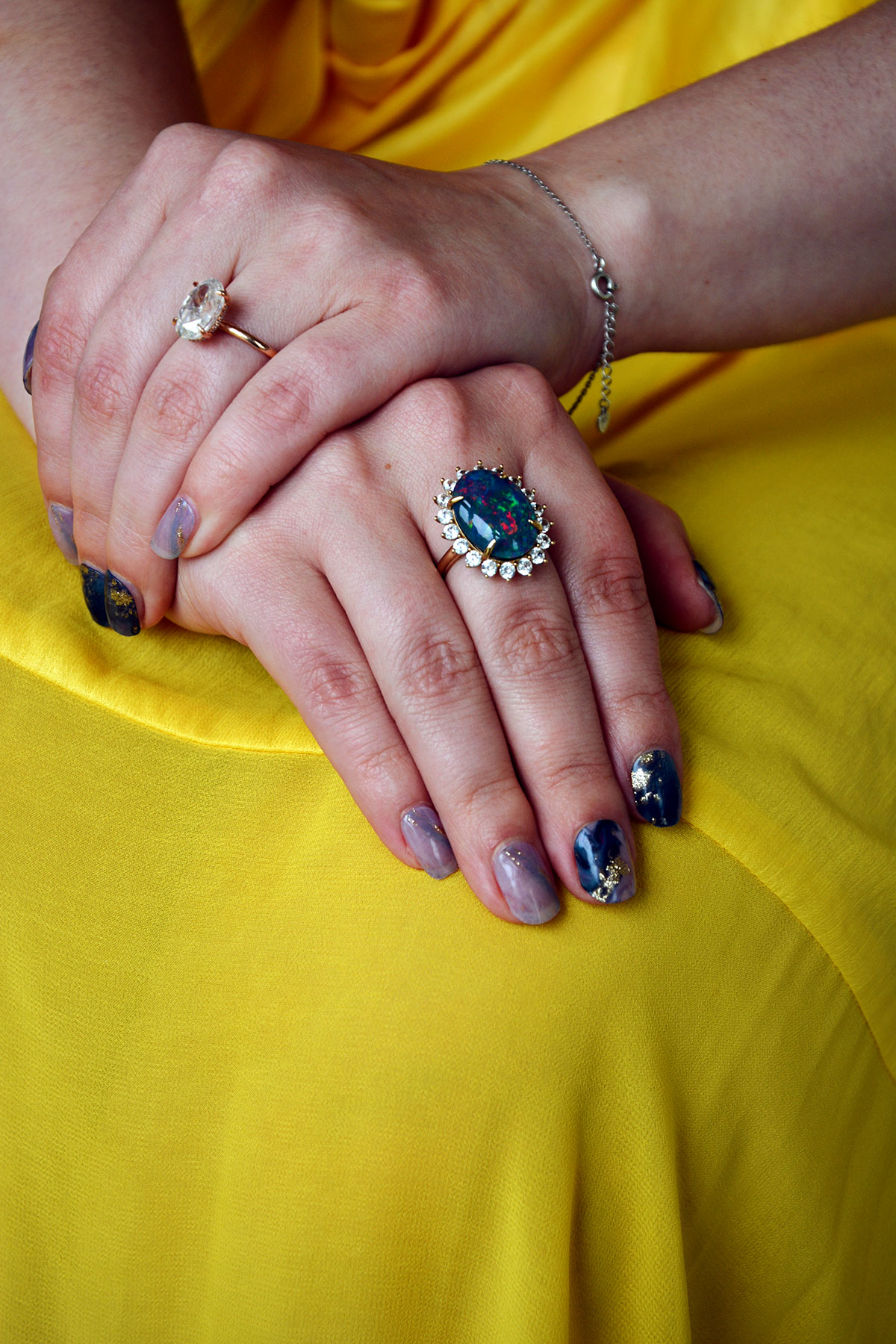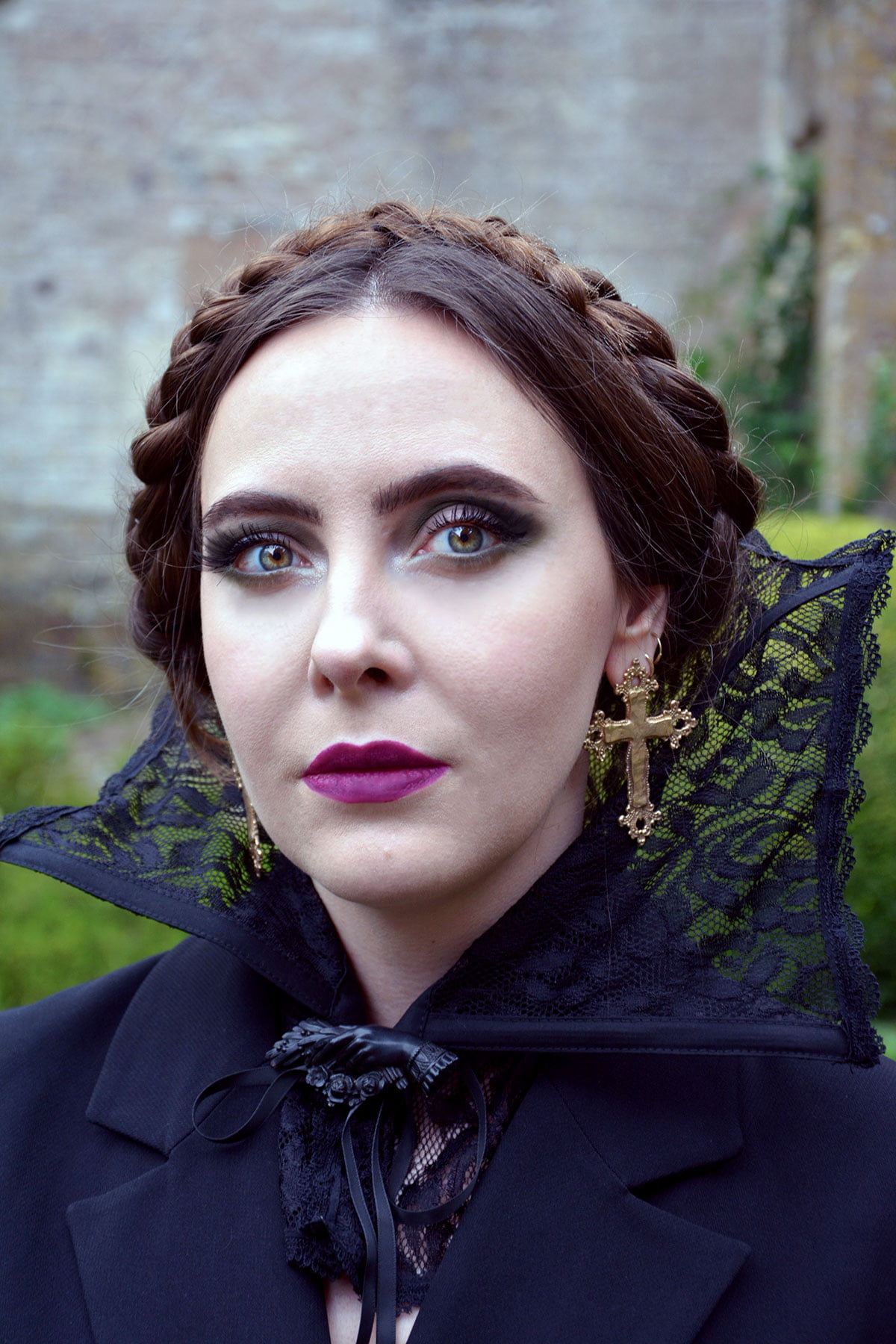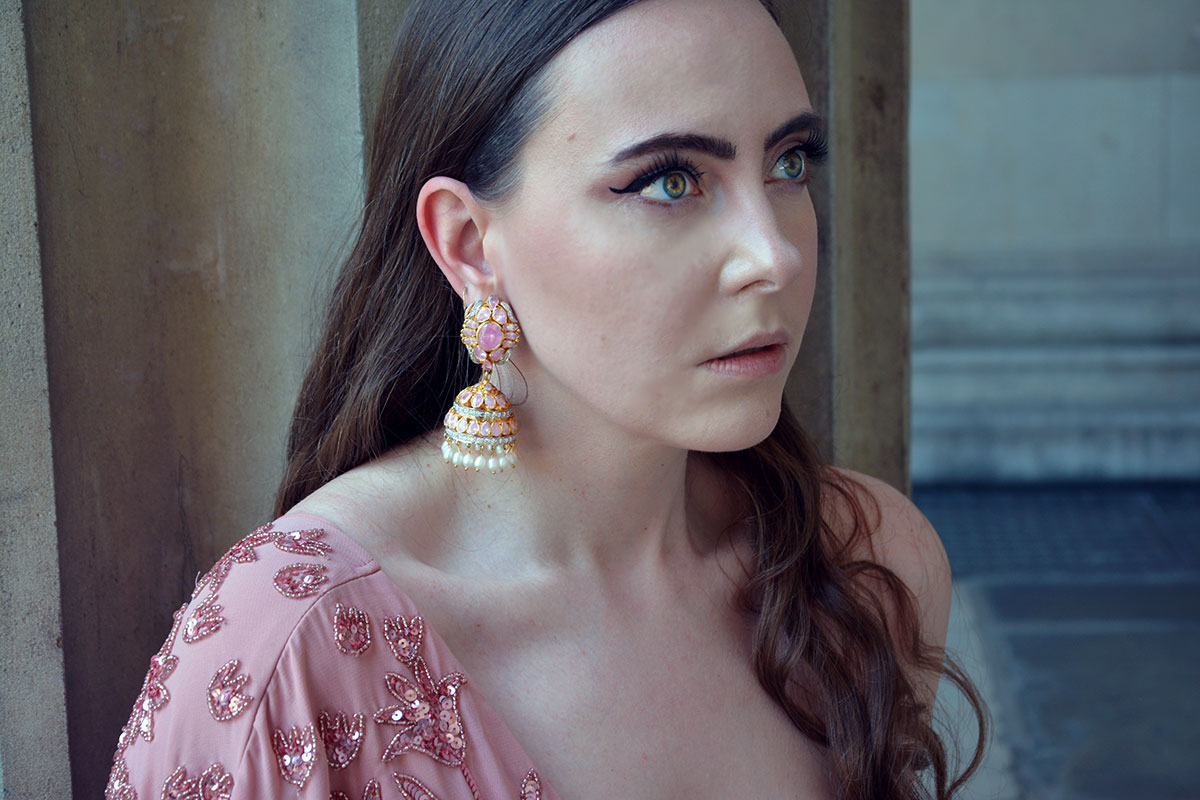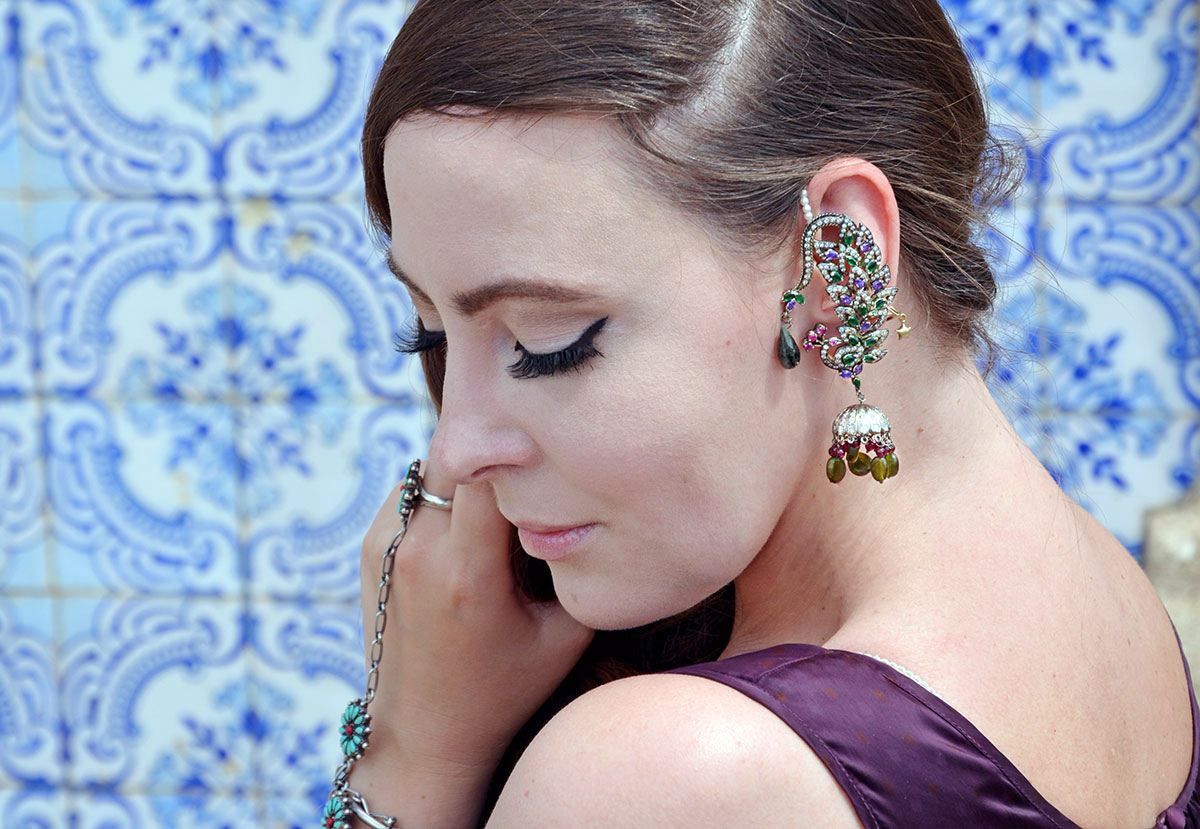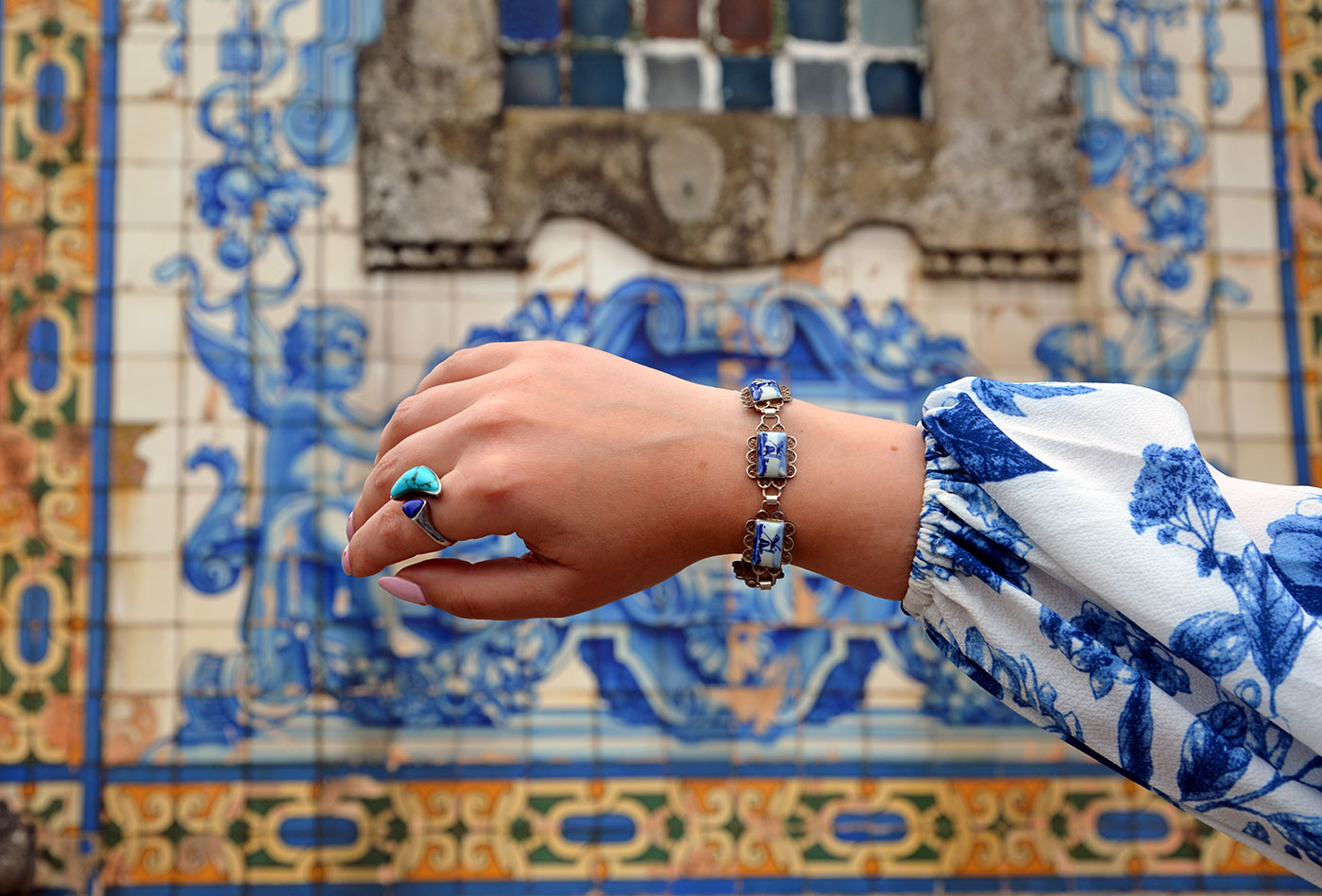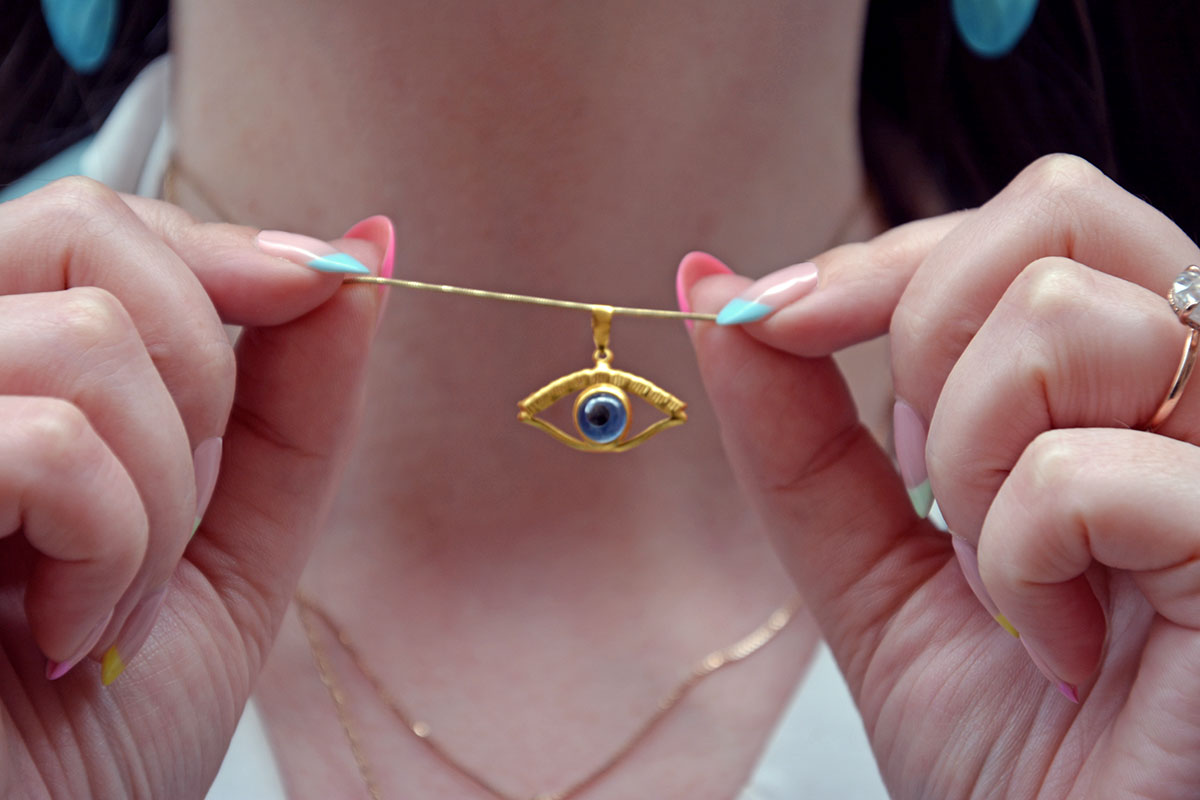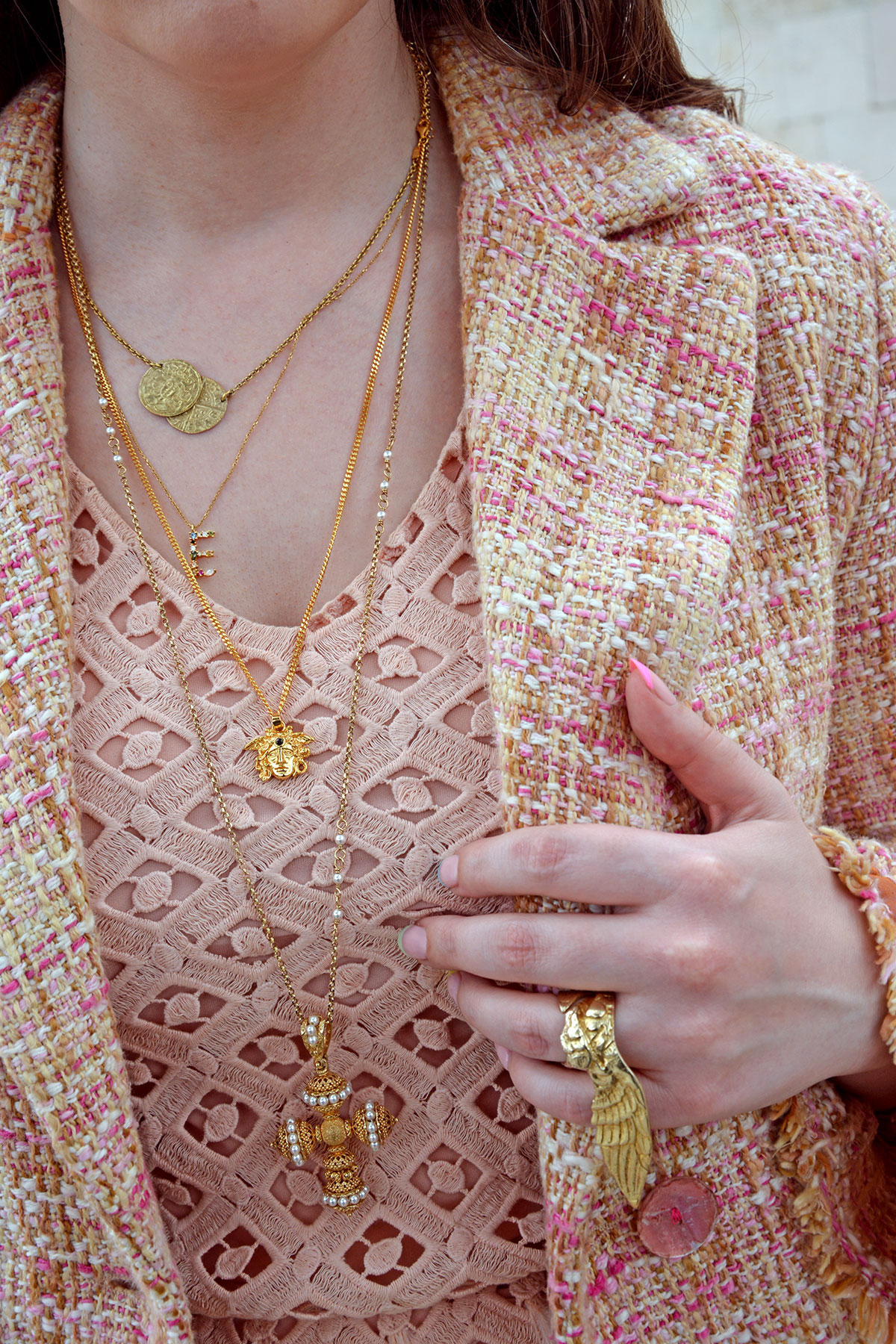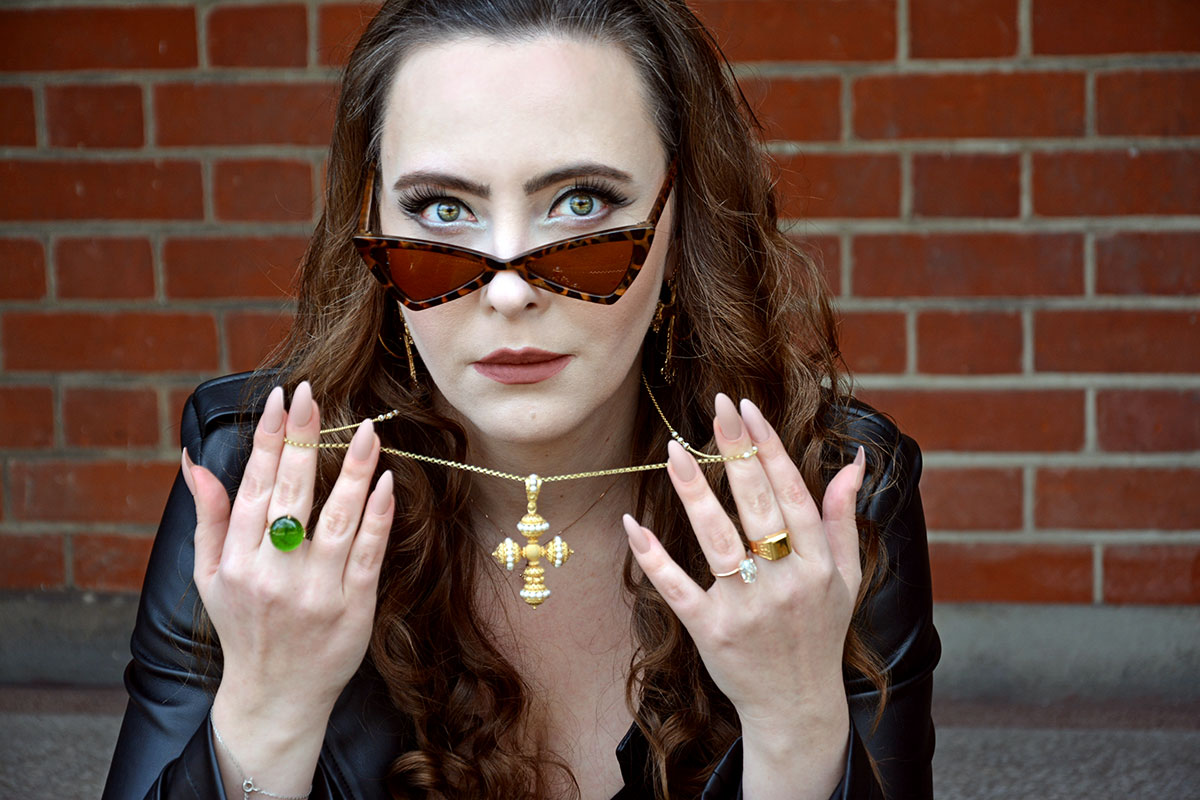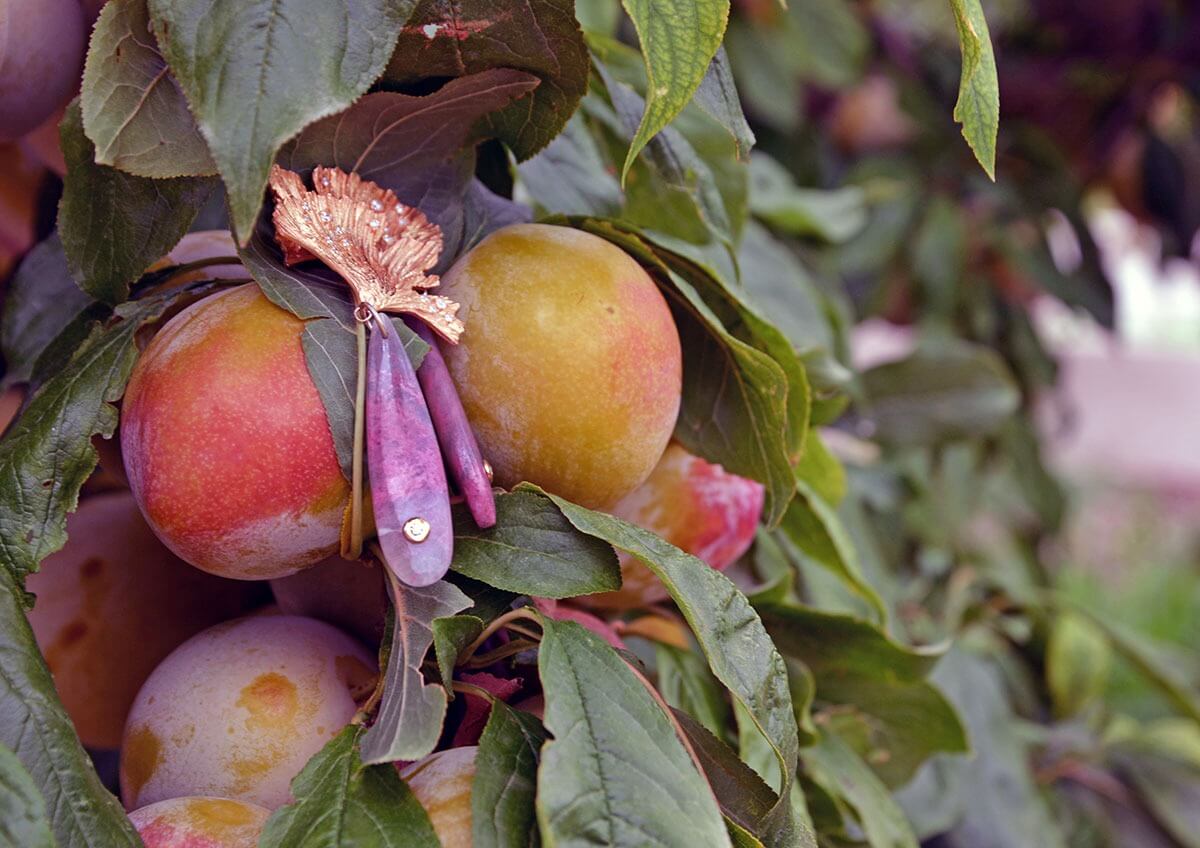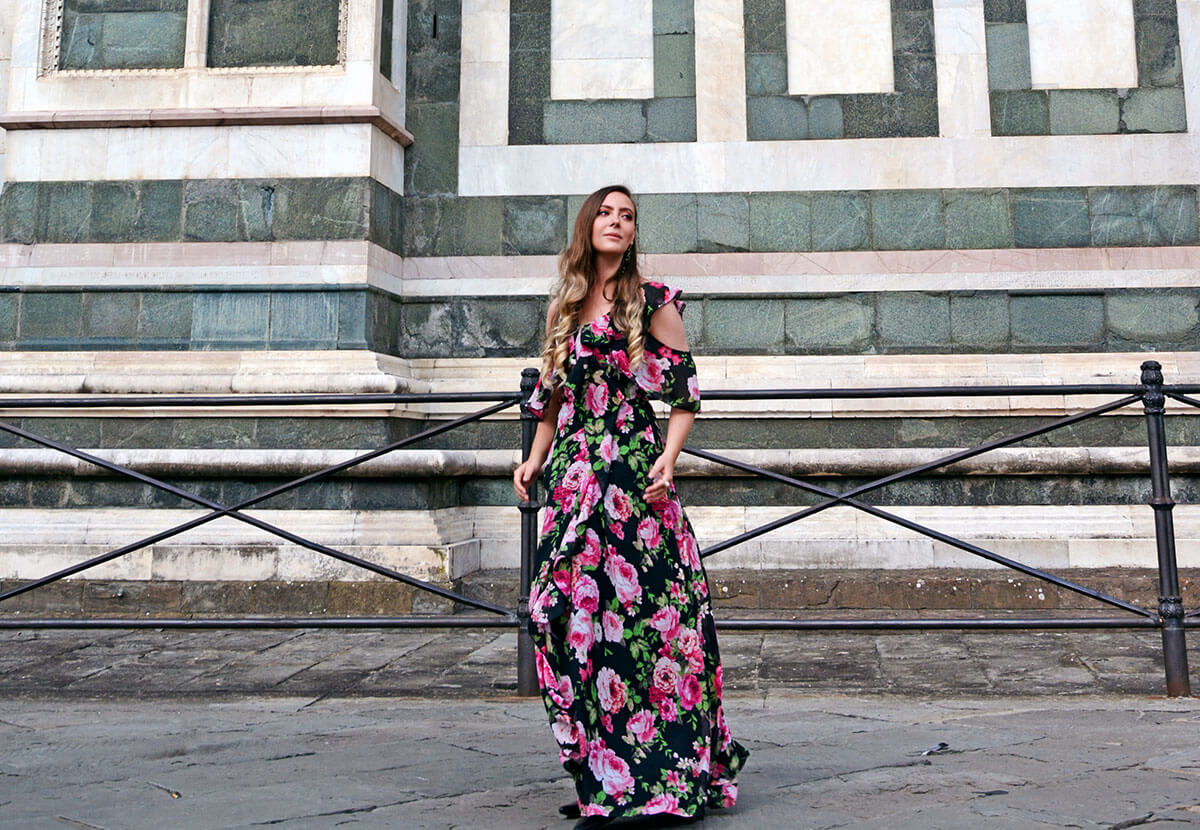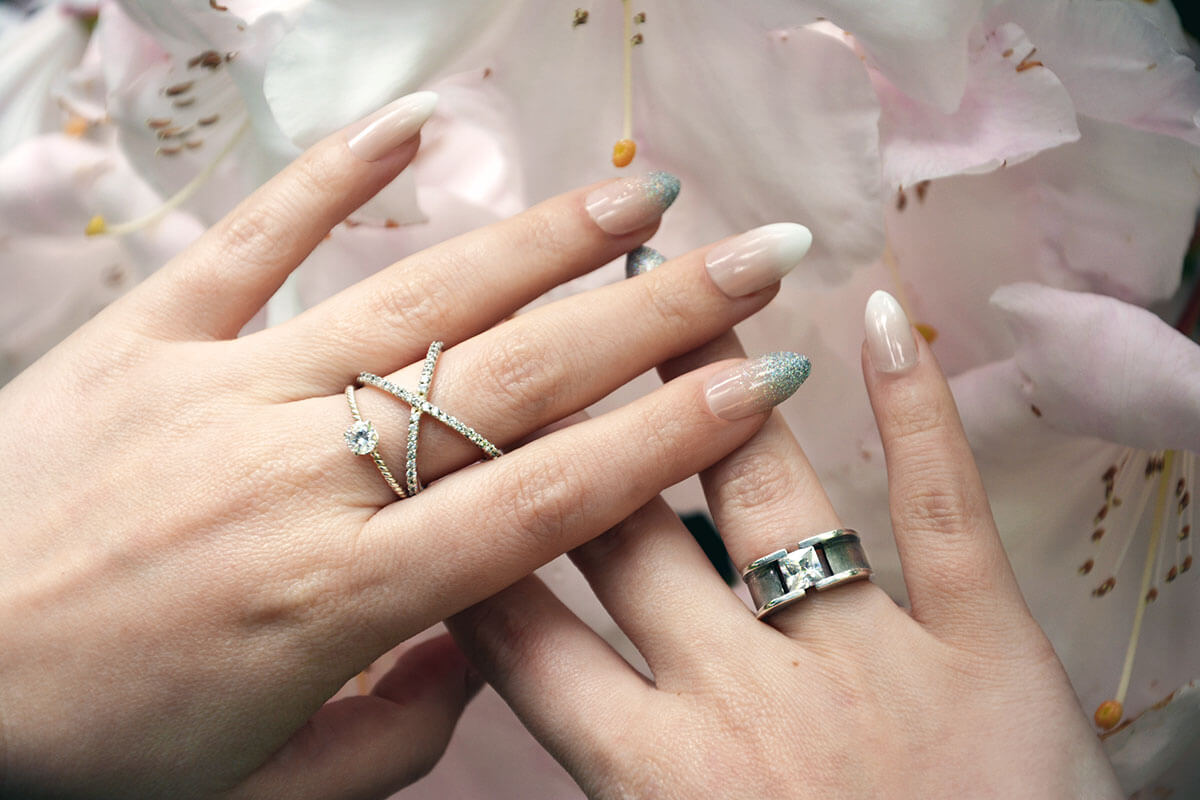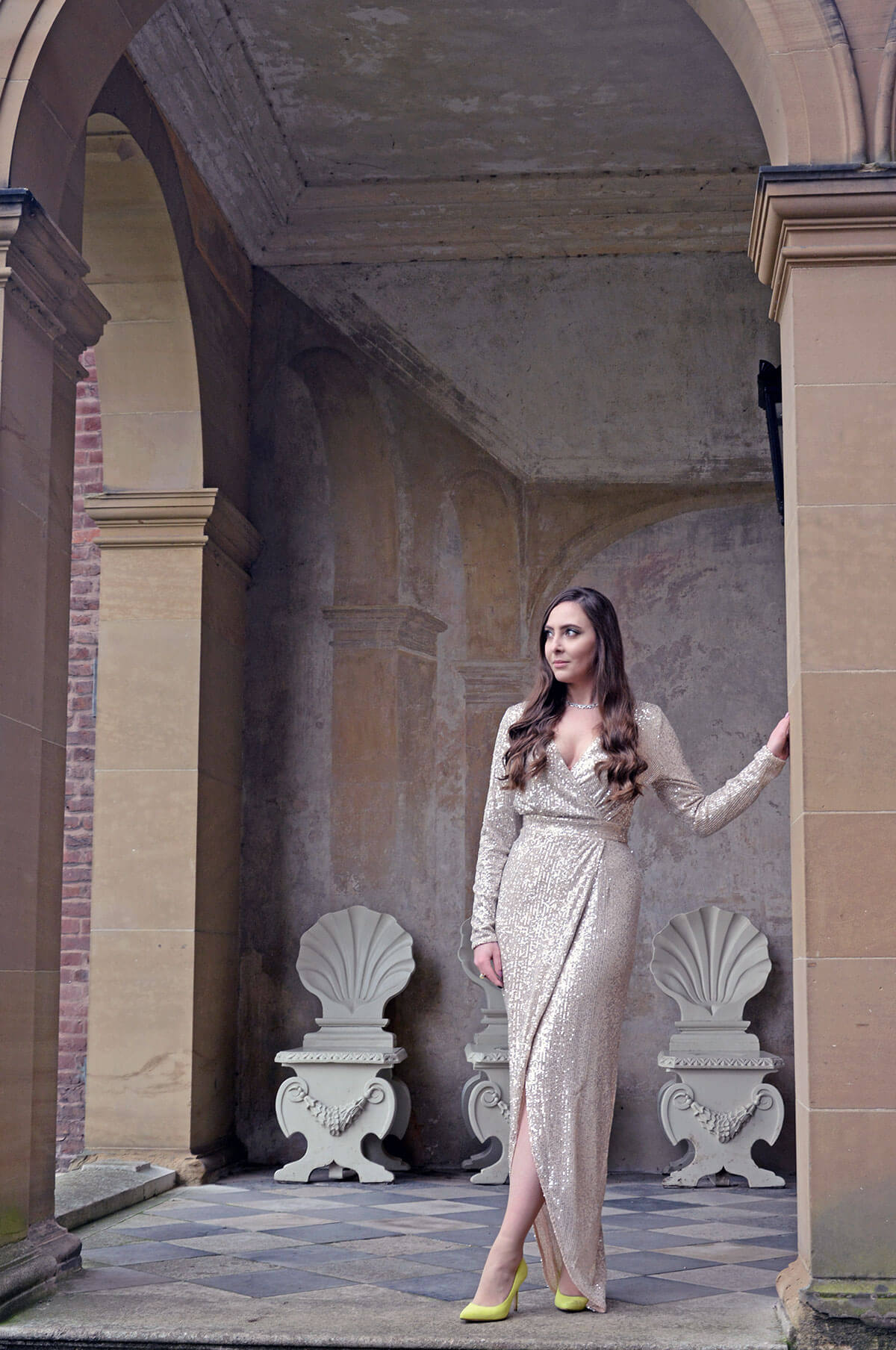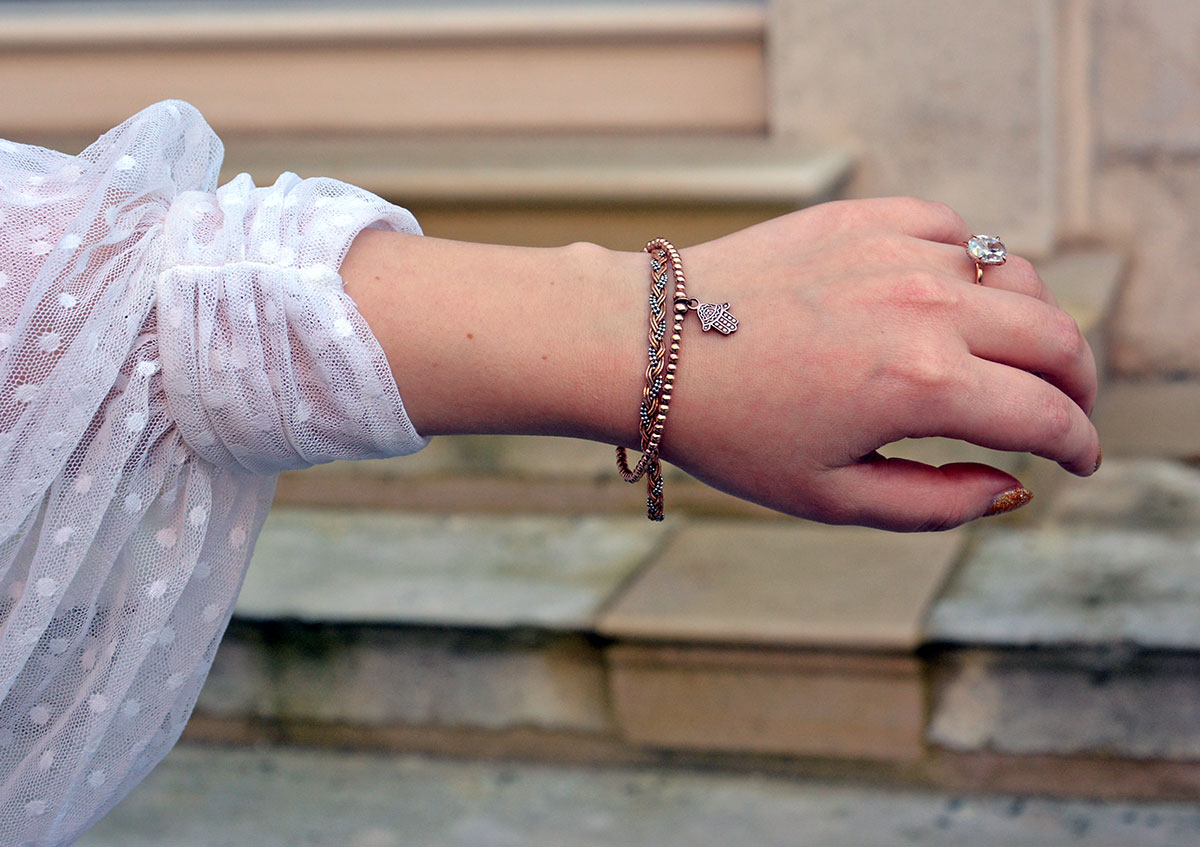When it comes to the colour green, emeralds are stealing the show. They are truly beautiful, so we let them. But there are other gems that are just as vibrantly leafy that could inject sage, basil, mint and more hues to spice up your jewellery collection. While green sapphire, green diamond and green zircon are honourable mentions, we’ll focus our list on gems that are known primarily for their saturated green shades or this colour has become a league of its own within the gemstone family (oh hi, green garnets and agates), rather than green being a secondary variety. With no further ado, let’s talk about some popular green gemstones that are not emeralds.
1. Green Agate
While a saturated green agate is on the rare side, this gemstone is often dyed or infused with iron and aluminium to achieve its juicy green shade – a practice started by the Ancient Romans. A cost-effective gem, and on the hard side of Mohs scale at 6.5-7, green agates are used as faceted stones, carved cameos and cabochons in jewellery alike. A frugal gem collector’s choice.
2. Jade
Jade is a blanket name for two gems: Jadeite and nephrite. Known for its gentler, pastel green shades, both jadeite and nephrite are perfect for everyday wear. Jadeite scores 6.5-7 on Mohs scale, while nephrite comes slightly below at 6-6.5, making them both stunning focal points of any jewellery piece that can be worn daily – as long as it’s done gently, without exposing to any harsh chemicals, being hit or banged. It’s best to take it off when you’re building a house.
Deep dive into the history, the similarities and differences between jadeite and nephrite here.
3. Maw sit sit
Maw sit sit is a relatively inexpensive green gemstone when compared to the prices of high calibre jadeite. It was first identified in 1963, and found only in Northern Burma. Maw sit sit’s colour is very unique, green with dark veining, which can go from translucent to opaque. It is not a type of jade, but it does have chromium-enriched jadeite in its composition along with albite feldspar. Hardness on Mohs scale is 6-7, making it durable, so you can enjoy wearing it as often as you like, provided you take care of it.
4. Malachite
Malachite could have been Cleopatra’s favourite eyeshadow. Huh? That’s right, from being crushed and used as a paint pigment up until the 1800s, to a key driver in copper ore extraction, this gemstone has seen it all. Healing crystal enthusiasts love malachite, jewellery fans adore wearing it, gem collectors are enchanted by its unusual bonding, malachite will always be a style statement. On Mohs scale of hardness, this green gem scores a fragile 3.5-4, so it’s worth being extra careful when wearing it, especially on a ring.
Find out more about malachite here.
5. Bloodstone
Wait, is bloodstone not red? Nope. When we think of bloodstone, also known as heliotrope, it’s usually opaque deep green jasper with red inclusions of hematite, looking like blood specs. This is what gives bloodstone its devious name. Often used in signet rings, this gem is versatile and durable with a respectable 6.5–7 on Mohs scale of hardness.
6. Green garnets: Tsavorite and demantoid
While we think of garnets as deep burgundy to brown, garnets are as complicated as your family, with new family members constantly popping up. Tsavorites of the grossular garnet variety are such an example. These green gemstones are newbies to the gemsphere, discovered in 1967. Tsavorites are light to deep green and score 7-7.5 on Mohs scale, making them perfect emerald alternatives.
Meanwhile demantoids, andradite garnet family members, are known for having rare horsetail shaped inclusions, and come with a higher refractive index and dispersion level than diamonds. This means they sparkle “showing” other colours, also known as “having fire”. Demantoids are considered the most valuable garnet type, and score 6.5–7 on Mohs scale.
Get sucked into the world of garnets and their history here.
7. Serpentine
Known for its olive green colour and scaly pattern, serpentine takes its name from the Latin serpentinus, which means serpent rock. While beautiful in its own right, this gem has often been used to imitate jade due to its likeness and affordability. Another gem for the frugal collector, serpentine can be often found set in sterling silver and in artisan pieces. On Mohs scale, its hardness varies from 3-6, depending on the quality and variety.
8. Aventurine
Did you know that a shimmering effect on a quartz is called aventurescence? Sounds like a word we all should use more often. This improvement to our lexicon is brought to us by aventurine. It is a type of quartz that is known for that green glistening, sparkly look due to having mineral inclusions and a level of translucency. On Mohs scale of hardness, aventurine comes at 7, making it nice and durable. Take extra care when buying this stone as some glass sellers may call their products aventurine glass or aventurine–effect, which is different to aventurine quartz.
9. Verdelite
We’re entering tourmaline territory. Green tourmaline, chrome tourmaline, and verdelite (all synonyms) is known to have better clarity and durability than an emerald. It is more affordable too. The only difference is that the shade of verdelite is leaning more towards olive rather than that forest green emeralds are known for. Scoring 7-7.5 on Mohs scale of hardness, no wonder why these green gemstones are often given emerald cuts.
10. Moldavite
Want something from outer space? Enter moldavite. This is a type of glass that formed as a consequence of a meteorite impact in southern Germany that happened roughly 15 million years ago. Known for its olive green colour, moldavite is a type of tektite that scores 5.5-7 on Mohs scale. Is it the reason many think aliens are green?
11. Chrome diopside
Chrome diopside, sometimes called Russian diopside, is one of the newest green gemstones on the market, even younger than tsavorite garnets. Discovered in 1988 in eastern Siberia, chrome diopside’s prices remain low despite their rarity. These intensely green gems get their colour from chromium, the same way emeralds get theirs. Investors are stocking up on chrome diopsides, expecting their prices to go up soon. On Mohs scale these newbies come at 5.5–6.5.
12. Chrysoprase
The name of this stone comes from the Greek word chrysos meaning gold, and prasinon meaning green. This is a variety of chalcedony with traces of nickel that give chrysoprase its distinctive apple green colour that sometimes deepens to a dark green. If you like a greasy, waxy shine rather than sparkly fire, this stone could be right for you. Scoring 6-7 on Mohs scale of hardness, this is a green apple you shouldn’t bite into but definitely enjoy wearing as often as you like.
Any favourites from all of these green gemstones? On this rare occasion, I’ll give zero points if you answer emerald.
In the images I am wearing malachite earrings, chrysoprase and green agate rings.













